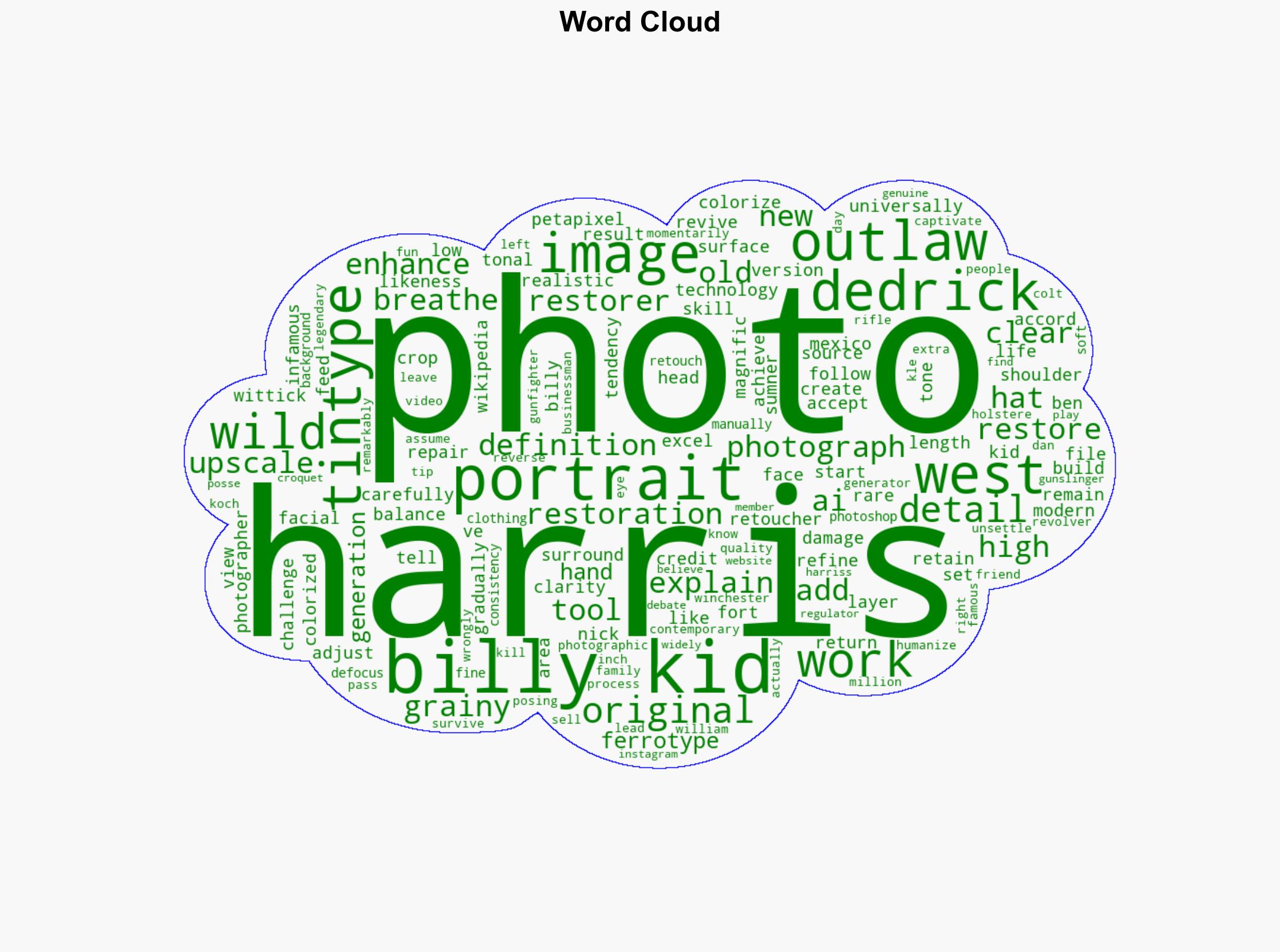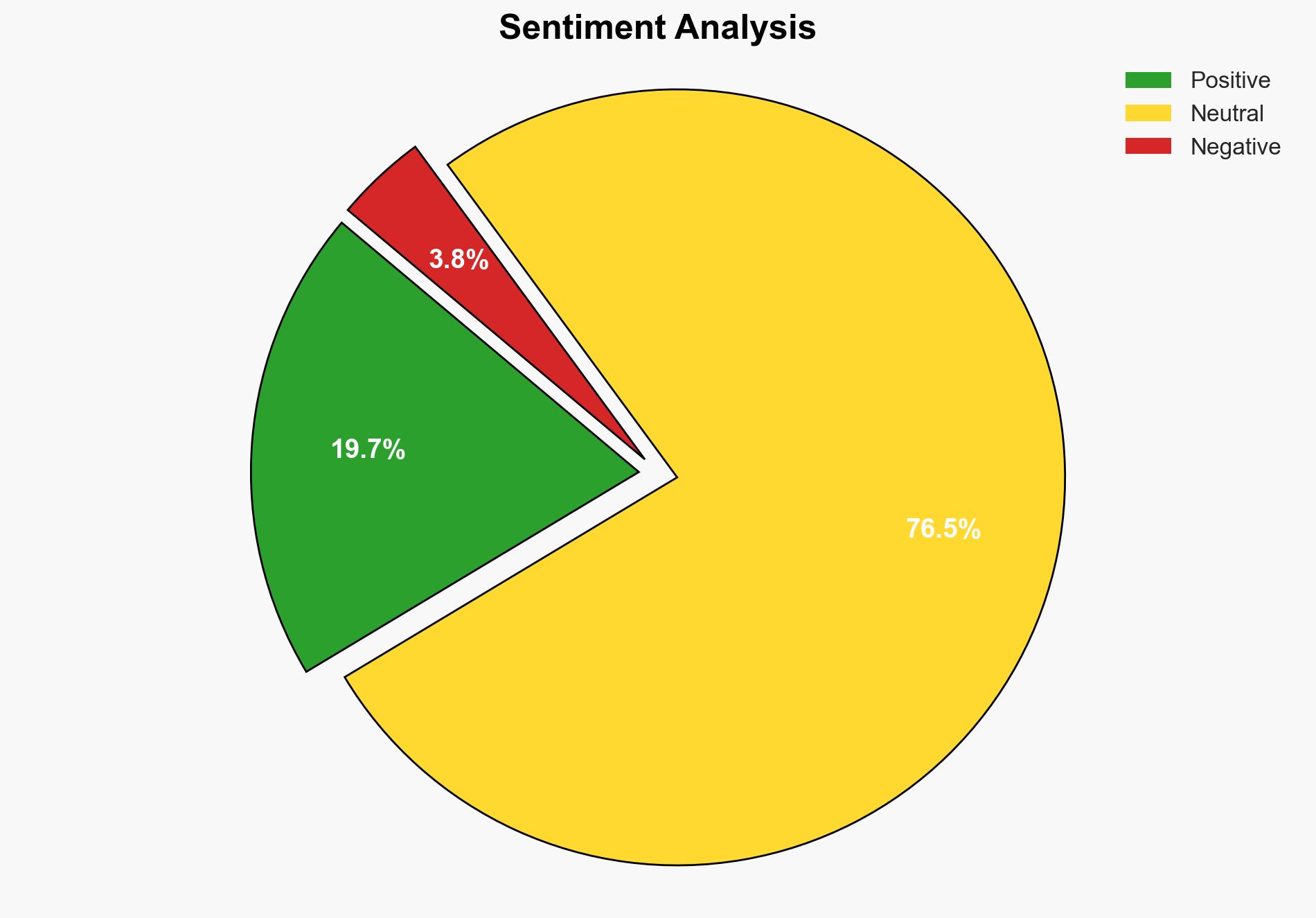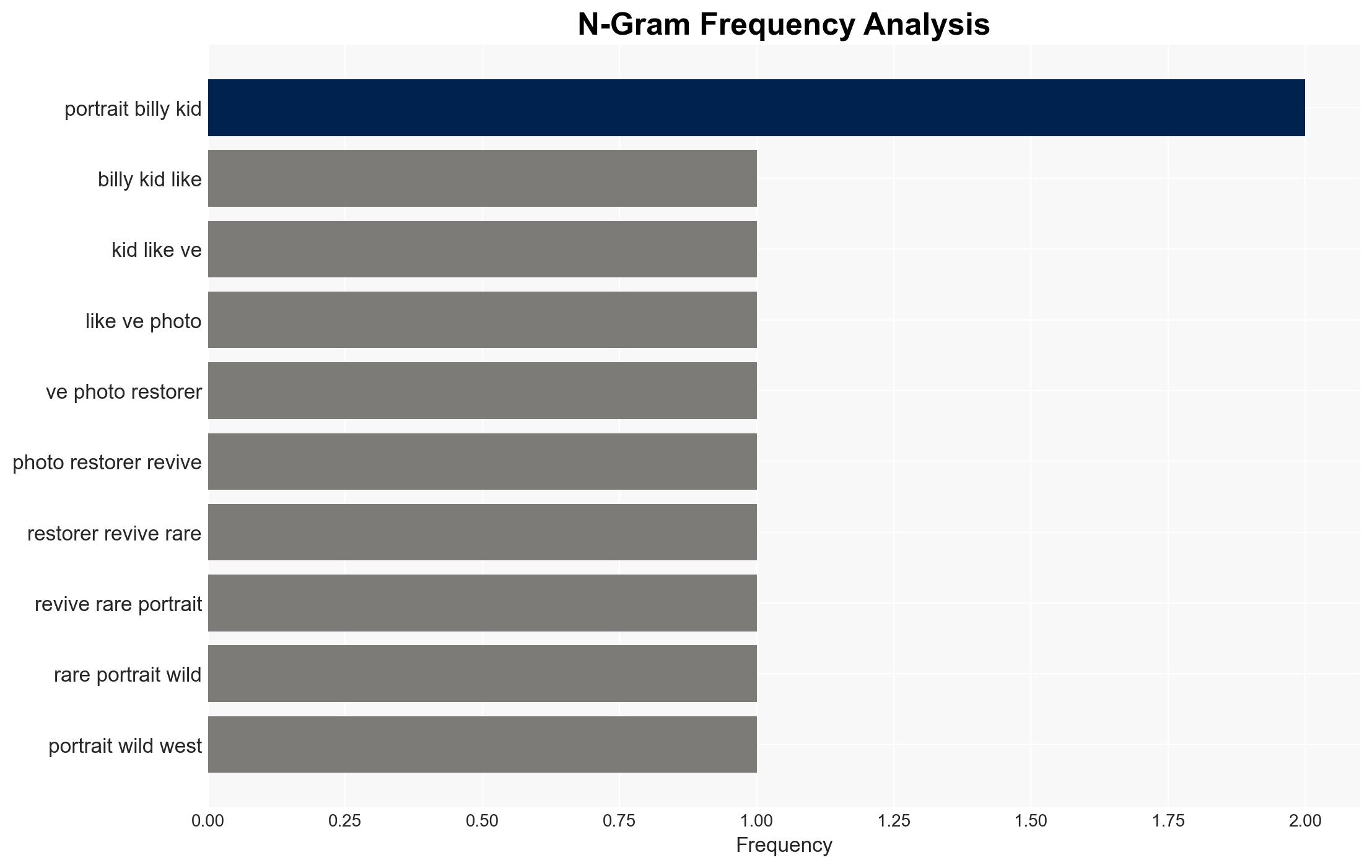Billy the Kid Like Youve Never Seen Him Photo Restorer Revives Rare Portrait of the Wild West Outlaw – PetaPixel
Published on: 2025-11-15
AI-powered OSINT brief from verified open sources. Automated NLP signal extraction with human verification. See our Methodology and Why WorldWideWatchers.
Intelligence Report:
1. BLUF (Bottom Line Up Front)
The restoration of a rare portrait of Billy the Kid by Nick Harris using modern technology has sparked renewed interest and debate about historical authenticity and technological influence on historical records. With a moderate confidence level, the most supported hypothesis is that the restoration will enhance public interest in historical figures and artifacts, potentially leading to increased investment in similar projects. Recommended actions include monitoring public and academic reactions to gauge the impact on historical narratives and technological ethics.
2. Competing Hypotheses
Hypothesis 1: The restoration of Billy the Kid’s portrait will lead to a positive reassessment of historical artifacts, driving interest and investment in similar restoration projects.
Hypothesis 2: The restoration may lead to skepticism and controversy over the authenticity and ethical implications of using AI and modern technology on historical artifacts, potentially undermining trust in historical records.
Hypothesis 1 is more likely due to the growing trend of using technology to enhance historical understanding and the public’s fascination with iconic historical figures. However, Hypothesis 2 remains plausible given the ongoing debates about AI’s role in altering historical perceptions.
3. Key Assumptions and Red Flags
Assumptions: It is assumed that the restored image accurately represents Billy the Kid and that the public will accept the technological enhancements as beneficial.
Red Flags: Potential bias in the restoration process, such as subjective interpretation of colors and details, and the risk of AI tools introducing inaccuracies.
Deception Indicators: The possibility of misrepresentation of the restoration process or the original artifact’s condition to enhance perceived value or authenticity.
4. Implications and Strategic Risks
The restoration could influence public perception of historical authenticity, potentially leading to increased scrutiny of other historical artifacts. If the restoration is perceived negatively, it could trigger debates about the ethical use of AI in historical contexts, impacting future projects and funding. Conversely, a positive reception could bolster technological integration in historical preservation efforts.
5. Recommendations and Outlook
- Monitor public and academic discourse to assess the impact of the restoration on historical narratives and technological ethics.
- Engage with historians and technologists to develop guidelines for ethical restoration practices.
- Best-case scenario: The restoration is widely accepted, leading to increased interest and investment in historical preservation.
- Worst-case scenario: The restoration is deemed unethical, leading to public distrust in technological interventions in history.
- Most-likely scenario: Mixed reactions with ongoing debates about the role of technology in historical preservation.
6. Key Individuals and Entities
Nick Harris (Photo Restorer), Ben Wittick (Original Photographer), William Koch (Businessman who purchased the photo).
7. Thematic Tags
Cybersecurity, Historical Preservation, Technological Ethics, AI in History, Cultural Heritage
Structured Analytic Techniques Applied
- Adversarial Threat Simulation: Model and simulate actions of cyber adversaries to anticipate vulnerabilities and improve resilience.
- Indicators Development: Detect and monitor behavioral or technical anomalies across systems for early threat detection.
- Bayesian Scenario Modeling: Quantify uncertainty and predict cyberattack pathways using probabilistic inference.
Explore more:
Cybersecurity Briefs ·
Daily Summary ·
Support us
·





